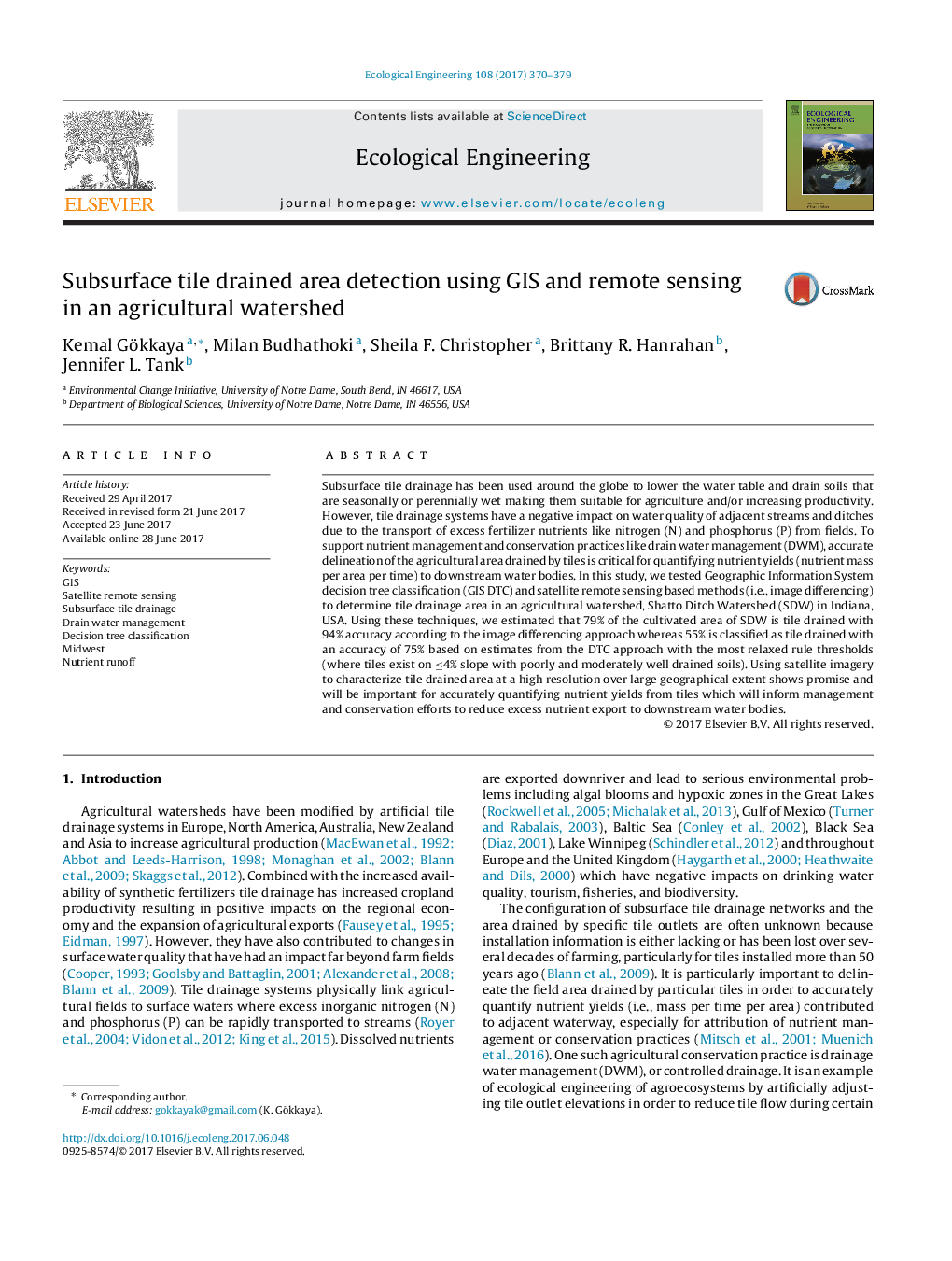| Article ID | Journal | Published Year | Pages | File Type |
|---|---|---|---|---|
| 8848172 | Ecological Engineering | 2017 | 10 Pages |
Abstract
Subsurface tile drainage has been used around the globe to lower the water table and drain soils that are seasonally or perennially wet making them suitable for agriculture and/or increasing productivity. However, tile drainage systems have a negative impact on water quality of adjacent streams and ditches due to the transport of excess fertilizer nutrients like nitrogen (N) and phosphorus (P) from fields. To support nutrient management and conservation practices like drain water management (DWM), accurate delineation of the agricultural area drained by tiles is critical for quantifying nutrient yields (nutrient mass per area per time) to downstream water bodies. In this study, we tested Geographic Information System decision tree classification (GIS DTC) and satellite remote sensing based methods (i.e., image differencing) to determine tile drainage area in an agricultural watershed, Shatto Ditch Watershed (SDW) in Indiana, USA. Using these techniques, we estimated that 79% of the cultivated area of SDW is tile drained with 94% accuracy according to the image differencing approach whereas 55% is classified as tile drained with an accuracy of 75% based on estimates from the DTC approach with the most relaxed rule thresholds (where tiles exist on â¤4% slope with poorly and moderately well drained soils). Using satellite imagery to characterize tile drained area at a high resolution over large geographical extent shows promise and will be important for accurately quantifying nutrient yields from tiles which will inform management and conservation efforts to reduce excess nutrient export to downstream water bodies.
Related Topics
Life Sciences
Agricultural and Biological Sciences
Ecology, Evolution, Behavior and Systematics
Authors
Kemal Gökkaya, Milan Budhathoki, Sheila F. Christopher, Brittany R. Hanrahan, Jennifer L. Tank,
